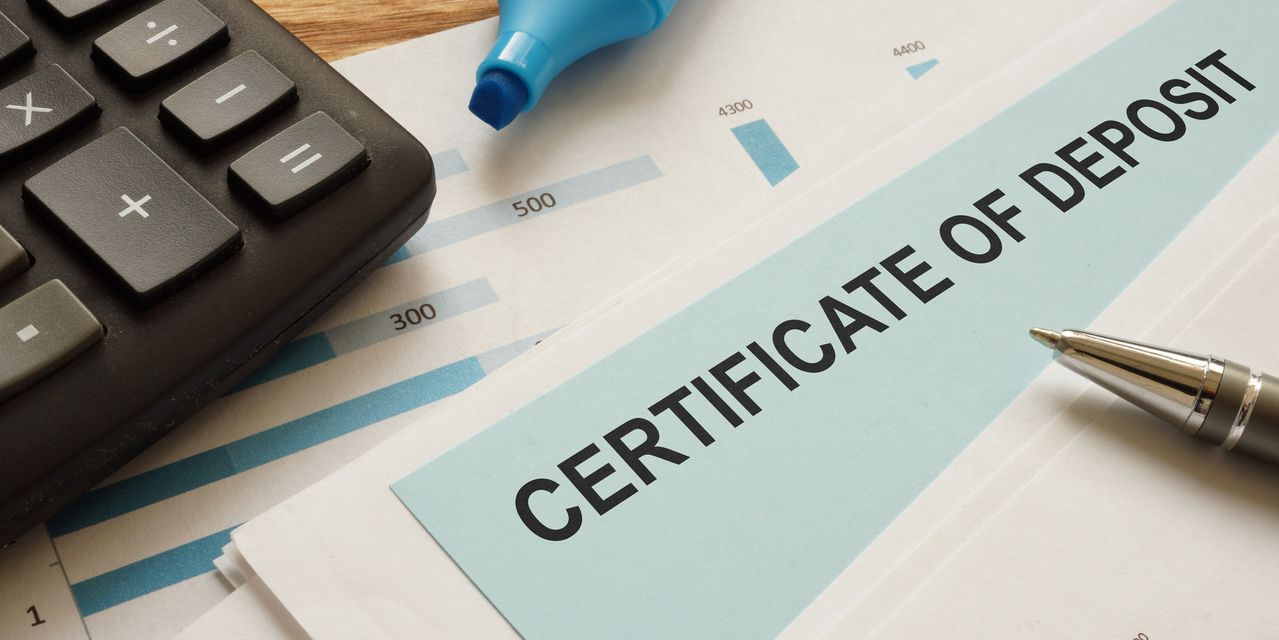Several banks are now offering certificates of deposit paying 5% interest or even slightly better for two full years.
At the time of writing, those included Wells Fargo
WFC,
Morgan Stanley
MS,
First Foundation
FFWM,
and Pacific Crest Savings Bank. The names will change daily, though, so you’ll have to check for yourself. And remember that the best deals are available through online brokerage accounts.
One or two banks are even offering CDs paying 4.8% or more for three years. At the time of writing, those included Sallie Mae Bank at 4.85%, UBS
UBS,
and First Foundation.
These CDs will end up paying you much more interest than many others that appear to offer higher headline rates, some advertised at up to 5.5% or more. That’s because the CD market includes some traps for the unwary.
The first is that many CDs paying high rates of interest only do so for a short period of time. If a CD offers to pay you an annual percentage yield, or APY, of 5.5%, but it’s only a nine-month CD, you won’t get 5.5%. You’ll only get nine months’ worth of that, which works out to 4.125%. Those APY numbers, which convert all accounts’ interest to annual rates, are useful in many ways. But they can also be misleading.
A two- or three-year CD paying around 5% is almost certainly going to work out to a much better deal than a one-year CD paying the same amount, because your interest will compound for so much longer.
When the one-year 5% CD expires, you’ll be looking around for another one so that you can reinvest the money. But the money markets predict that a year from now, short-term interest rates will be heading back down. So you may be hard pressed to find anything like 5% interest available.
You’d only want the shorter-term CD if you think you might need the money for something else — or if you think the futures markets are wrong and short-term interest rates will keep going up.
The second trap in the CD market is a doozy: Many CDs that appear to offer high interest rates have no call protection. That means the issuing bank can just cancel your CD, along with your juicy interest rate, early — sometimes as early as within a couple of months.
In other words, those high headline rates are just teaser rates.
If you’re looking for call-protected CDs, the best rates available are 5% for two years and 4.85% for three.
How good are those deals? Pretty good, actually. They are more than 2 percentage points ahead of the most recent trend inflation rate. Prices rose 0.2% in June, for a 2.4% annual trend rate. The futures markets predict that a year from now, the Federal Reserve’s short-term rates will be around 4.25% or 4.5%, and heading down.
There are, of course, no guarantees that the futures markets are right.
And these CD rates are certainly a lot better than what most people are getting at the moment. According to Bankrate.com, citing official data from the Federal Deposit Insurance Corp., the average interest rate currently paid on savings accounts in America is 1.71%.
That’s one-third of short-term rates.
This is absolutely shocking. For a generation, Americans stopped checking the interest they were getting in their savings accounts because, well, “Interest? What interest?”
Rates were zero, or nearly.
And we’re busy — too busy to do things like check savings-account rates.
Good news for bankers, bad news for us.
Whether you want a CD or not is another matter. They offer security and, up to $250,000, an FDIC guarantee. There is usually an early-withdrawal penalty, although it is typically just a few months’ interest. On the other hand, conventional wisdom says that stocks are usually a much better savings vehicle for the longer term.
But if you want a CD, 5% for two years or 4.8% for three is going to be hard to beat. Way better than 1.7%, anyway.
Read the full article here





